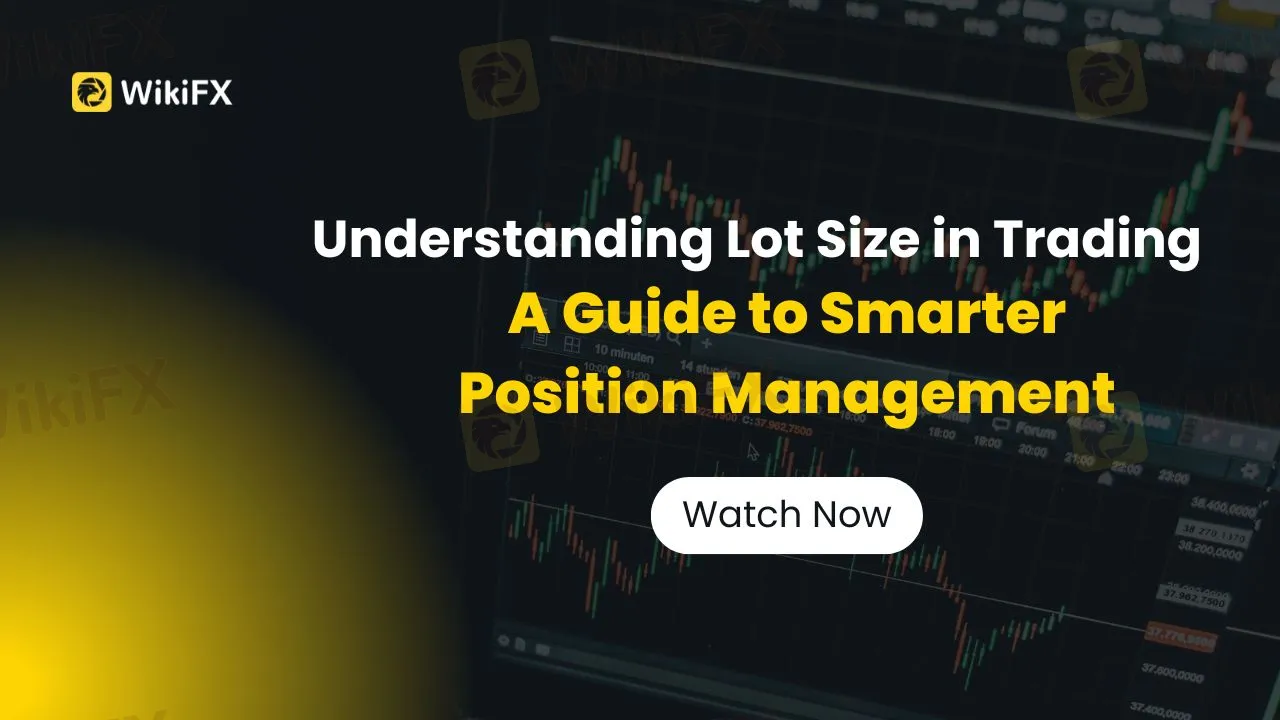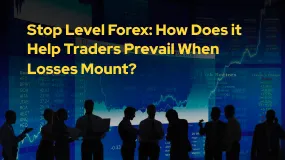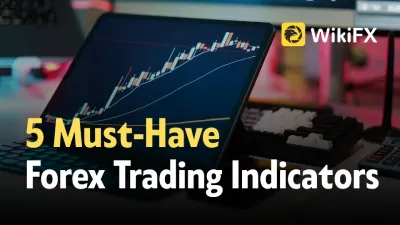简体中文
繁體中文
English
Pусский
日本語
ภาษาไทย
Tiếng Việt
Bahasa Indonesia
Español
हिन्दी
Filippiiniläinen
Français
Deutsch
Português
Türkçe
한국어
العربية
Understanding Lot Size in Trading: A Guide to Smarter Position Management
Abstract:Learn how lot size in trading affects your risk, profit, and strategy execution. Discover how to calculate the ideal lot size for your trades with real examples and smart tips.

What does ‘lot size’ actually mean for your trading decisions?
In forex and CFD trading, lot size isn‘t just a technical detail—it’s a fundamental factor that directly impacts your profit potential and risk exposure. Whether youre placing your first trade or optimizing your existing strategy, understanding how to choose the right lot size is key to long-term success.
What Is Lot Size in Trading?
Lot size refers to the number of units of an asset youre buying or selling in a single trade. In forex, for example, one standard lot equals 100,000 units of the base currency. This system helps traders define their position size in a uniform and scalable way. Think of it as the building block of any trade—small changes in lot size can dramatically shift your outcomes.
To give you an idea:
- A standard lot equals 100,000 units.
- A mini lot equals 10,000 units.
- A micro lot equals 1,000 units.
- A nano lot equals 100 units (offered by some brokers).
So if you open a trade with 1 standard lot on EUR/USD, youre essentially trading €100,000 against the USD.
Why Does Lot Size Matter?
Lot size plays a dual role—it affects how much profit you can make and how much you can lose. Every pip movement in the market corresponds to a different dollar amount depending on your lot size.
Let‘s say you’re trading EUR/USD:
- At 1 standard lot, one pip is worth $10.
- At 1 mini lot, one pip is worth $1.
- At 1 micro lot, one pip is worth $0.10.
This means if the market moves against your trade by 50 pips, you could lose $500, $50, or $5 depending on your lot size. That‘s why managing your lot size isn’t about being aggressive—its about being smart.
How Lot Size Relates to Risk Management
One of the most overlooked mistakes in trading is choosing a lot size without calculating the corresponding risk. Ideally, you want to limit each trades potential loss to a certain percentage of your account balance—commonly 1% or 2%.
For example, if your trading account has $5,000 and your maximum risk per trade is 2%, that means youre willing to lose $100 on any single trade. Based on your stop-loss distance (say, 50 pips), you can calculate your lot size precisely to stay within that risk limit.
This is where position sizing calculators come into play. They help you reverse-engineer the correct lot size based on your account size, risk tolerance, and stop-loss distance.
Lot Size and Leverage: A Risky Combo?
Leverage lets you control large positions with a small amount of capital, but when combined with oversized lot sizes, it becomes a double-edged sword. Many retail traders fall into the trap of using high leverage to amplify gains without realizing how fast losses can pile up.
Let‘s say your broker offers 1:100 leverage. With just $1,000, you could theoretically open a trade worth $100,000 (1 standard lot). But that means a 100-pip move against your position could wipe out your entire balance. Sound scary? That’s because it is. Lot size and leverage should always be balanced with tight risk controls.
Choosing the Right Lot Size: Practical Scenarios
Imagine two traders:
- Trader A has a $10,000 account and uses 1% risk per trade with a 50-pip stop-loss. He calculates the right lot size as 0.2 standard lots.
- Trader B has a $1,000 account but opens 1 standard lot on every trade because hes chasing fast profits.
Guess whos more likely to blow their account?
The answer is clear: Trader A may not win every trade, but he‘s protecting his capital with every position. That’s the power of using appropriate lot sizes in tandem with a structured trading plan.
Is There an Ideal Lot Size for Beginners?
If youre just starting out, stick with micro lots or nano lots. They let you trade real markets with minimal exposure, which is perfect for building experience without putting your capital at risk. More importantly, they let you practice risk management, which is the most valuable skill a trader can develop.
As you grow more confident and consistent, you can gradually scale up. But your lot size should never grow faster than your understanding of the market.
Final Thoughts
Lot size in trading is more than just a number—its the bridge between your strategy and your risk profile. Pick a lot size that fits your account size, your goals, and your temperament. Use tools, stay disciplined, and above all, treat every trade as a lesson in risk control.
Lot size wont guarantee success. But mastering it will keep you in the game long enough to get there.
FAQ: Lot Size in Trading
Q: Can I change lot size in the middle of a trade?
No. Once a trade is executed, the lot size is fixed. To increase or decrease exposure, youd need to open or close positions accordingly.
Q: Do all brokers offer nano lots?
Not always. Nano lots are typically available on cent accounts or beginner-friendly platforms. Check your brokers terms before signing up.
Q: How do I calculate pip value based on lot size?
You can use online pip value calculators. Generally, for a standard lot in EUR/USD, 1 pip = $10.
Q: Is using a smaller lot size always safer?
Not necessarily. If your lot size is too small relative to your account, you may not gain enough experience managing meaningful risk. The key is balance, not just safety.
Disclaimer:
The views in this article only represent the author's personal views, and do not constitute investment advice on this platform. This platform does not guarantee the accuracy, completeness and timeliness of the information in the article, and will not be liable for any loss caused by the use of or reliance on the information in the article.
Read more

Trading Other People’s Money | What Prop Firms Don’t Tell You
Proprietary (prop) trading firms have become increasingly popular. They give traders the chance to trade with larger amounts of money without risking their own savings. For many, this sounds like the perfect opportunity to grow faster and earn more. But while the benefits are appealing, there are also risks and hidden rules that traders must understand before joining a prop firm.

Mastering the Evening Star
The Evening Star is one of the most reliable bearish reversal candlestick patterns in forex trading. When correctly identified and traded, it can help you capture trend reversals and protect profits. In this article, we’ll explore what the Evening Star is, why it works, how to spot it on your charts, and best practices for trading it effectively.

Stop Level Forex: How Does it Help Traders Prevail When Losses Mount?
Ever wondered what happens when your trades start going south—and your margin takes a hit? Meet ‘Stop Level Forex’—the trader’s emergency brake that kicks in just before things spiral out of control. Explore this story to know its significance.

5 Powerful Forex Trading Indicators Every Trader Needs
Learn about the 5 most powerful forex trading indicators every trader should use. Improve your market analysis, trading decisions, and accuracy with these essential tools.
WikiFX Broker
Latest News
WEEKLY SCAM BROKERS LIST IS OUT! Check it now
Apex Trader Funding is an Unregulated Firm | You Must Know the Risks
What WikiFX Found When It Looked Into Aron Markets
Textiles to whisky: U.K.–India 'historic' deal is set to boost bilateral trade by over $34 billion a year
Thailand-Cambodia border clashes: Cambodia's economy has more to lose, analysts say
Puma shares plunge 18% after full-year sales, profit outlook cut on U.S. tariffs
Is Your Forex Strategy Failing? Here’s When to Change
FSMA Warns That Some Firms Operate as Pyramid Schemes
Federal Reserve likely to hold interest rates steady despite pressure from Trump. Here's what that means for your money
Sigma-One Capital Scam? Investors Say They Can’t Withdraw Funds
Currency Calculator


